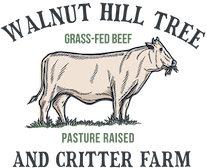Scientific Proof! Better Fatty Acid and Antioxidant Profiles
There are many articles in the scientific literature that show that grass-fed beef has less fat than grain-fed beef. Comparative studies have been few but intense interest in preventing disease by eating nutrient-enriched meat products are hitting the press. See below:
A Review of Fatty Acid Profiles and Antioxidant Content in Grass-fed and Grain-fed Beef: Nutr J. 2010; 9: 10.
Cynthia A Daley,1 Amber Abbott,1 Patrick S Doyle,1 Glenn A Nader,2 and Stephanie Larson2
Abbreviated Abstract
Growing consumer interest in grass-fed beef products has raised a number of questions with regard to the perceived differences in nutritional quality between grass-fed and grain-fed cattle. Research spanning three decades suggests that grass-based diets can significantly improve the fatty acid (FA) composition and antioxidant content of beef, albeit with variable impacts on overall palatability. Grass-based diets have been shown to enhance total conjugated linoleic acid (CLA) (C18:2) isomers, trans vaccenic acid (TVA) (C18:1 t11), a precursor to CLA, and omega-3 (n-3) FAs on a g/g fat basis. While the overall concentration of total SFAs is not different between feeding regimens, grass-finished beef tends toward a higher proportion of cholesterol neutral stearic FA (C18:0), and less cholesterol-elevating SFAs such as myristic (C14:0) and palmitic (C16:0) FAs. Several studies suggest that grass-based diets elevate precursors for Vitamin A and E, as well as cancer fighting antioxidants such as glutathione (GT) and superoxide dismutase (SOD) activity as compared to grain-fed contemporaries. Fat conscious consumers will also prefer the overall lower fat content of a grass-fed beef product.


